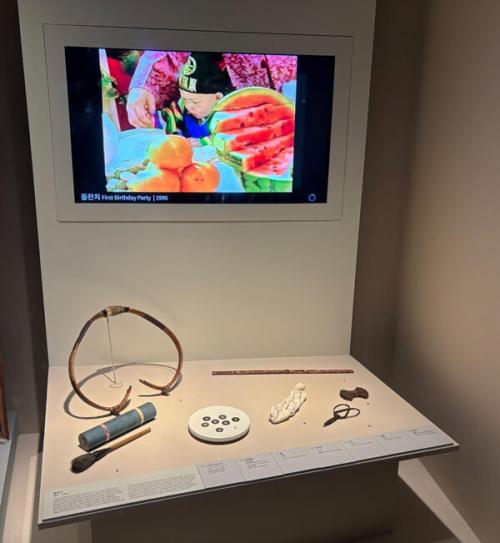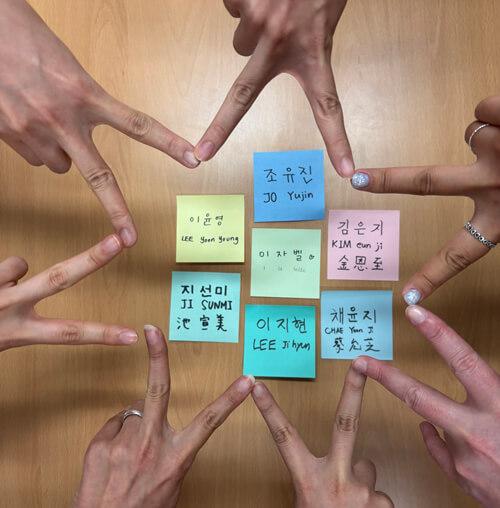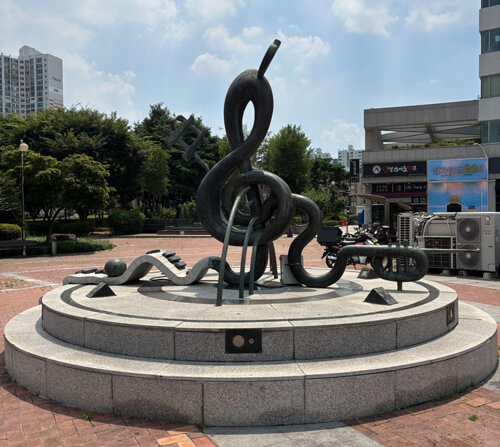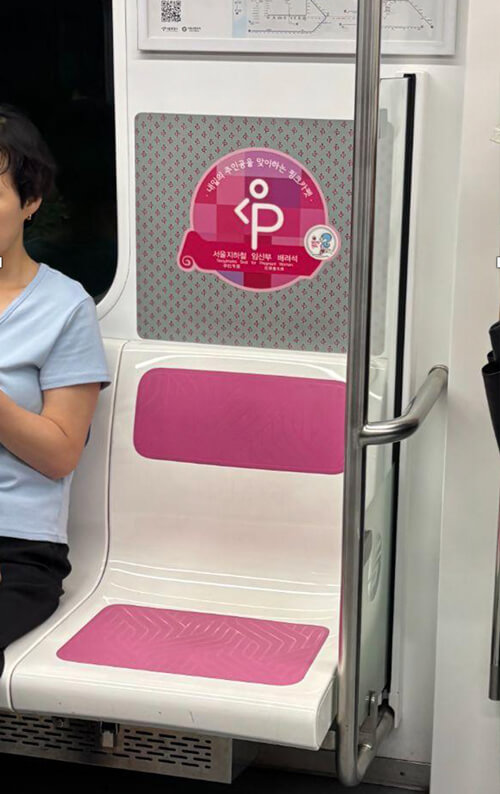As I am nearing the end of my UNESCO Fellowship at APCEIU in Seoul, I am becoming very reflective on all that I have learned about this country! I am so grateful for the cultural exchange opportunities I have had with my colleagues. We’ve had the most fun conversations! Ranging from silly things we experienced growing up, special holiday traditions, our favorite foods, or societal particularities. This blog is all fun facts I’ve learned about Korea, idiosyncrasies that make it special, or just things I thought were interesting and wanted to share. A huge thanks to my APCEIU colleagues who helped make sure I was as accurate as possible when writing this!
BIRTHDAYS
Doljabi (돌잡이)

A Korean baby’s first birthday is a huge celebration, complete with a traditional food offering, traditional Korean hanboks (traditional dress), gifts, and the Doljabi. The Doljabi is a ritual ceremony that is held during the baby’s first birthday celebration which foretells their future. Various items with symbolic meaning are placed out in front of the baby and according to tradition, the item they choose predicts their future. Examples of traditional items include a bow, medallion, set of coins, fortune pouch, brush, yarn, paper, medicine pot, rice ball, and notebook which symbolize both careers and blessings. For example, a piece of yarn symbolizes a long life and a pencil symbolizes intelligence. Nowadays, the Doljabi has become a bit more modernized, and items like a gavel, stethoscope, or microphone have been added that are more closely correlated with careers, and it is up to the family to select the items that are meaningful to them. Often, parents will try to coax their baby to choose certain items!
Korean Age vs. International Age
Some Koreans will say “I am 25 or 26 years old.” This is because there are two different “ages” in South Korea: “Korean Age” and “International Age.” In 2023, Korea switched to legally only using international age, but Korean age is still used from time to time. To calculate Korean age, babies are born at 1 year old and then add a year on January 1st. For example, if I was born in November 1994, I would be born at 1 year old and then turn 2 on January 1, 1995 (even though technically I was only a couple months old - Koreans will often refer to a baby’s age in terms of months up until about 36 months because of this). My Korean age today would be 32, but according to international age, I am only 30. Prior to 2023, both ages were being used, which caused a lot of confusion in social and legal situations, which is why they decided to standardize ages by using international age in all contexts. This went into effect in June, 2023, which was when one of my colleagues was going to turn 30 in Korean age, so she was relieved she could live out her twenties for one more year according to international age!
Seaweed Soup
When Koreans give birth, often mothers will eat seaweed soup (miyeokguk 미역국) afterwards to replenish nutrients and aid in recovery. Legend says the people of Goguryeo observed whales eating seaweed to heal their wounds after giving birth. Because of this, it is traditional to eat seaweed soup on your birthday as a way to honor your mother and her sacrifices! Majority of the time seaweed is cut into smaller pieces when preparing soup, but on birthdays it is kept as one long piece to signify a long life. One of my colleagues even makes seaweed soup for her dog’s birthday each year! I’m not saying it’s all thanks to the seaweed soup… but the little dog is 17 years old!
Names

Koreans have names that most often consist of three symbols - the first for the family name and two for the given name. The family names that make up the majority of South Korean families are Kim, Lee, Park, and Choi. Then the two syllable given name is sometimes a combination of a generation name that is shared by family members in that generation and a name unique to the individual. For example, siblings may be named Yu-jin and Yu-na. Or a unique combination of names determined by the parents, grandparents, or name makers. The tradition of using generation names is becoming less common in modern days.
Another unique thing about Korean names is that some still follow tradition and have a Chinese character spelling as well. These characters are given to them when they are born and are determined by the parents, grandparents, or name makers, but are not used much after birth. Originally, Chinese symbols were used because a Korean alphabet (Hangul) was not created until the mid-fifteenth century during the Joseon Dynasty. Interestingly, there is a Korean government-managed list of approved Chinese characters that can be used and if a name includes characters outside of the list, the family may be advised to choose a different name.
And one last thing about names! It’s not so common to call someone by their first name here, it’s more common to call them by their profession or a nickname. For example, in the APCEIU office, everyone calls each other “ssaem” meaning both teacher and as a title of respect depending on the context.
BIOLOGY
Deodorant
Okay this one really blew my mind… Koreans don’t wear deodorant and barely sweat. Despite the 90°+ days with 80%+ humidity… very little sweat. Many Americans could NEVER relate! It’s actually because of their biological makeup. Majority of Koreans have a mutation in their ABCCII gene which causes lipids and proteins released from their sweat glands to essentially not stink. This mutation is most prevalent in the Korean population, but it is also prevalent in populations in other East Asian countries as well as some Native American populations that migrated from East Asia. So interesting!
Beautiful Skin
This one isn’t actually biological! It’s as a result of skin care, sun protection, and diet. Koreans are very serious about their moisturizing, exfoliating, and toning routines. They also are very diligent about using sunscreen as well as physical sun blockers to protect their skin. Do not be surprised if you see someone covered head to toe, with even their face covered when out on a walk! And last but certainly not least, diet. Koreans eat foods that are very good for maintaining clear and healthy skin, specifically fermented foods, teas, ginseng, fish, and seaweed.
SOCIETAL

Unmanned Stores
My entire summer in Seoul, I have felt so safe. I have never felt a threat of getting pickpocketed or having anything broken into and this feeling seems to range across the country. For example, in Korea, there are unmanned stores! Stores without any attendant or security. It is through honesty and integrity that patrons pay for their products and behave themselves in the stores. There are unmanned convenience stores, toy stores, ice cream shops, photo booths, and karaoke spots. Each of these stores have CCTVs, but they really are not needed. Koreans are just good, trustworthy people.
Culture and Arts Promotion Act
In Korea, there is a law that all new buildings built over a certain size are required to include an art installment, causing there to be some really neat sculptures throughout Seoul! Here are a few of my favorites:



Reserved Seats
Korean public transit is AMAZING and the metro is very supportive of their elderly, disabled, and pregnant population. Each metro car has reserved seats at both the front and back for anyone who is old, disabled, or pregnant, and people are very good about leaving these seats open. Younger metro riders are also very good about giving their seat up to someone else if the reserved seats are all taken. Faith in humanity is restored!


Public Fitness Stations
Seoul is a very fit city! Trails along the Han River, trails through Yeouido Park, and trails in Gangnam are constantly packed with people powerwalking, biking, and running. There are even mini fitness stations funded by the government to promote public health along the trails for strength training and flexibility! Here is one near my office and another I saw when I visited Jeju Island.


If you made it this far, I hope you have enjoyed learning a little bit about life in Seoul! I am sad to be leaving this fun city I have called home for the past 2.5 months, but look forward to returning again soon - maybe when it is not so hot!!

Isabelle Cooksey is a M.A. Candidate in the International Education Program at the George Washington University. Her area of focus is Global Citizenship Education in the K-12 space.


